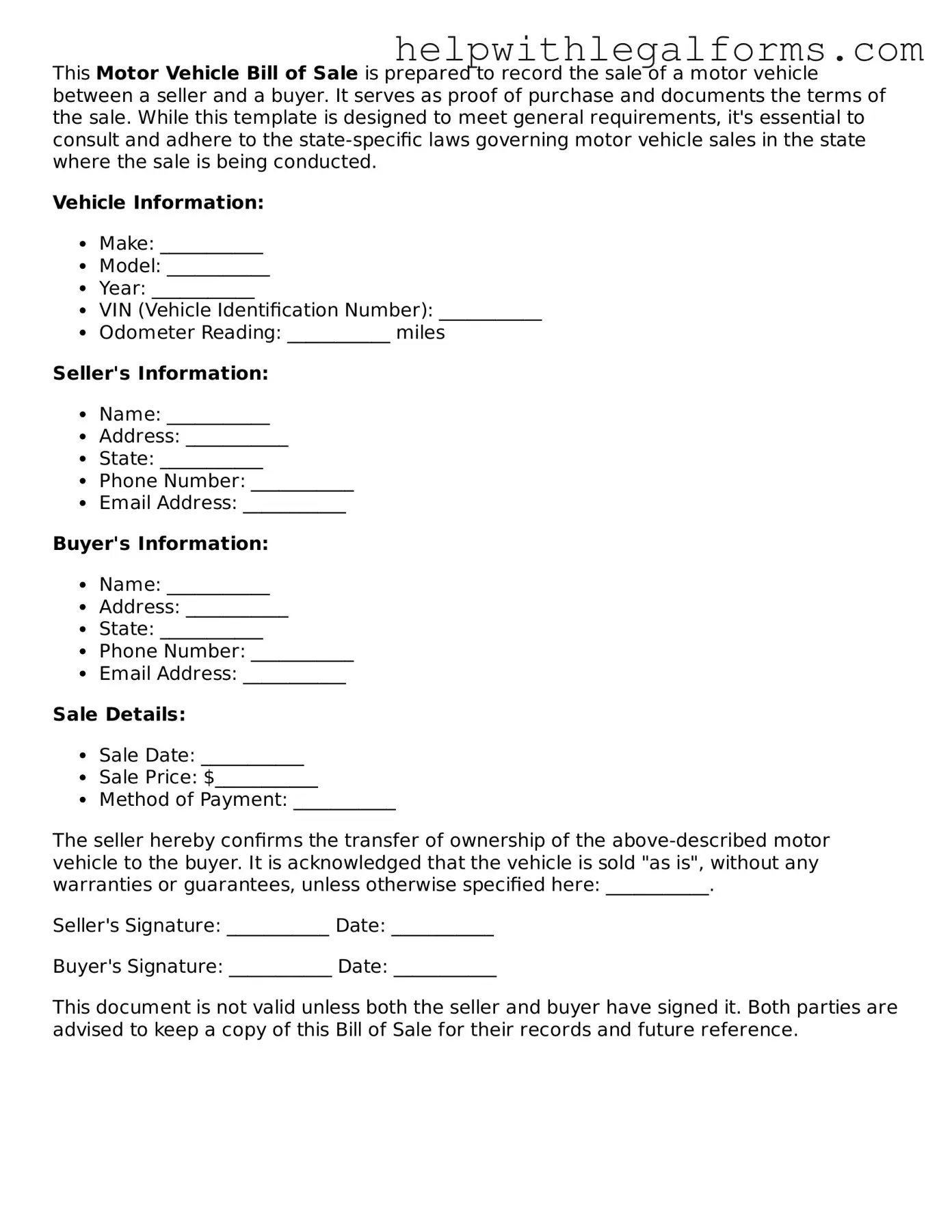What is a Motor Vehicle Bill of Sale?
A Motor Vehicle Bill of Sale is a legal document that records the transfer of ownership of a vehicle from a seller to a buyer. It acts as proof of purchase and includes vital information such as the make, model, year, and VIN (Vehicle Identification Number), along with the sale price and date.
Is a Motor Vehicle Bill of Sale required in all states?
No, not all states require a Motor Vehicle Bill of Sale for the transfer of a vehicle. However, it is recommended to have one for your records and potential needs such as registration, tax purposes, or legal protection. Certain states do mandate it for registering and titling of the vehicle, so it's important to check the specific requirements in your state.
What information should be included in a Motor Vehicle Bill of Sale?
A comprehensive Motor Vehicle Bill of Sale should include the seller's and buyer's name and address, vehicle description (make, model, year, VIN), sale date, purchase price, and signatures of both parties. Details such as odometer reading at the time of sale and any warranty information or "as-is" status should also be recorded.
Does a Motor Vehicle Bill of Sale need to be notarized?
Whether notarization is necessary depends on the state's requirements. Some states require the Bill of Sale to be notarized for it to be valid, especially if it's being used for registration purposes. Always check the local rules and regulations in your state to ensure compliance.
Can a Motor Vehicle Bill of Sale be handwritten?
Yes, a Motor Vehicle Bill of Sale can be handwritten as long as it includes all the necessary information and is legible. However, using a typed or pre-printed form is generally preferred for clarity and legality purposes.
What if the vehicle is being given as a gift? Do I still need a Motor Vehicle Bill of Sale?
Even if a vehicle is being given as a gift, it is wise to complete a Motor Vehicle Bill of Sale. This document can clarify the terms of the transfer, including that no money was exchanged, and can help in the registration process. It also provides a record of the transfer for legal purposes.
How does a Motor Vehicle Bill of Sale protect the buyer?
For the buyer, a Motor Vehicle Bill of Sale serves as proof of ownership and purchase. It details the condition of the vehicle at the time of sale and can protect the buyer from disputes regarding the vehicle's condition, provided terms like "as-is" are clearly stated.
How does a Motor Vehicle Bill of Sale protect the seller?
The seller benefits from a Motor Vehicle Bill of Sale as it can provide evidence that the vehicle was sold "as-is," or with whatever terms were agreed upon, transferring the responsibility to the buyer. It also records the transaction, showing that the seller has legally transferred ownership and is no longer liable for the vehicle.
Where can I get a Motor Vehicle Bill of Sale form?
Motor Vehicle Bill of Sale forms can be obtained from various sources including the Department of Motor Vehicles (DMV) website of your state, legal document websites, or by creating one yourself based on templates available online. Ensure that the form meets your state's requirements.
